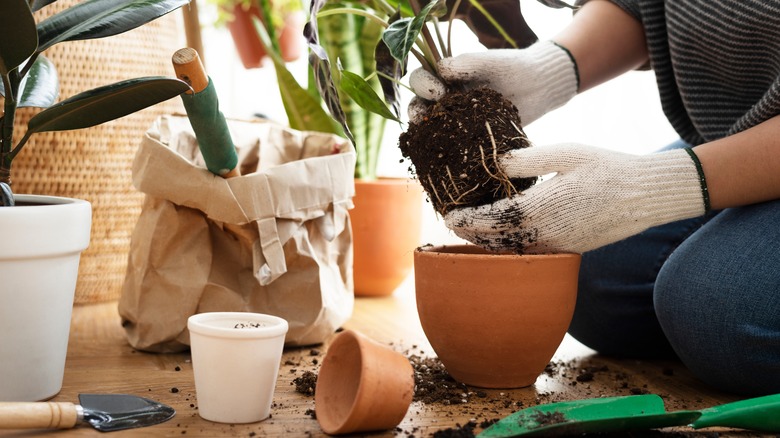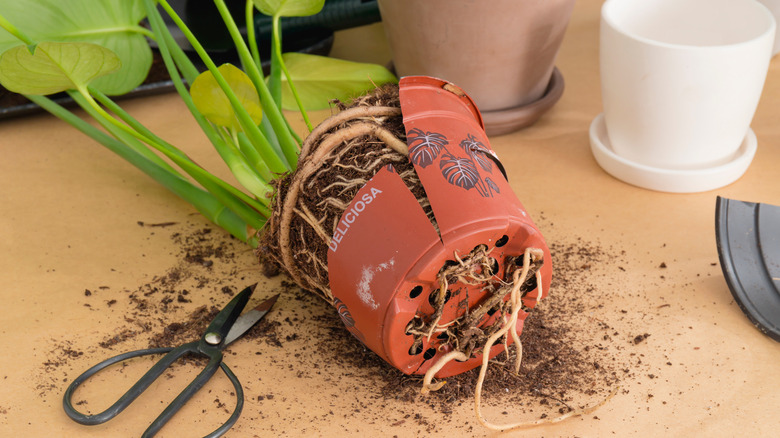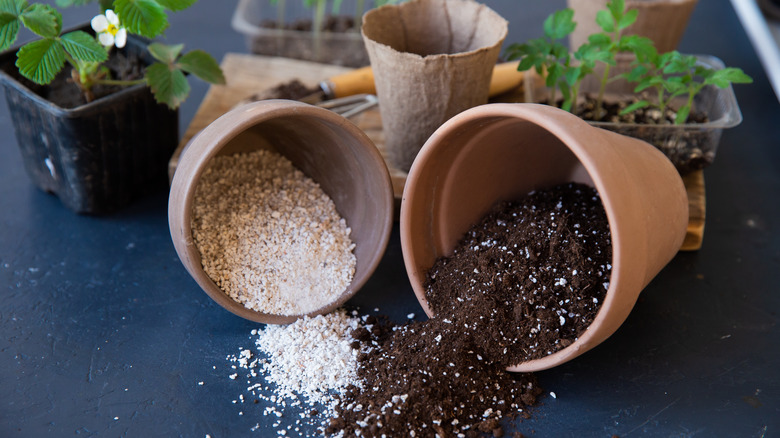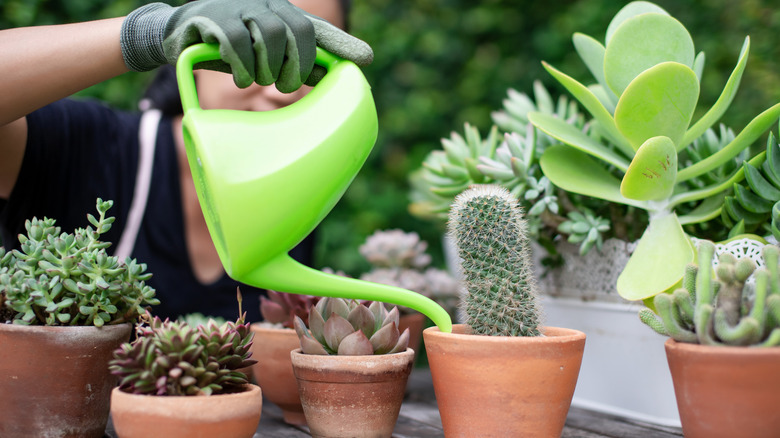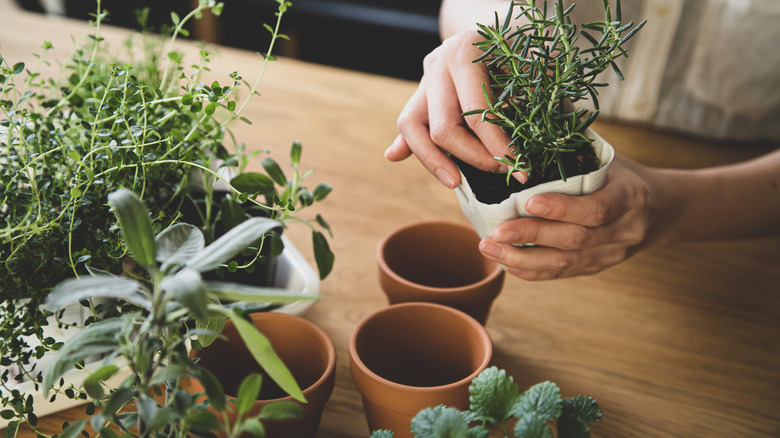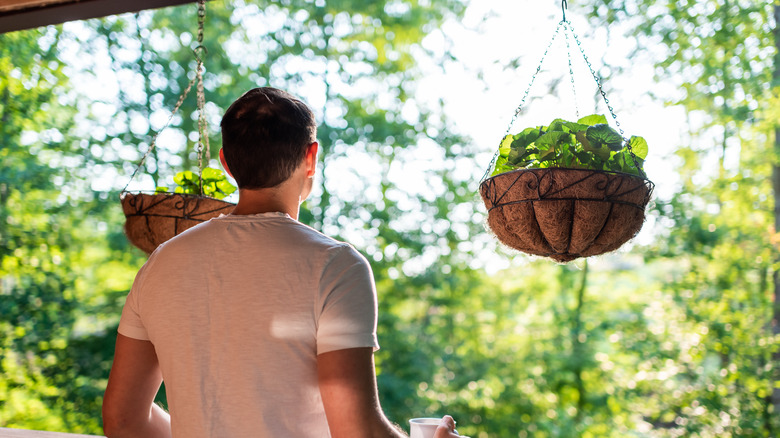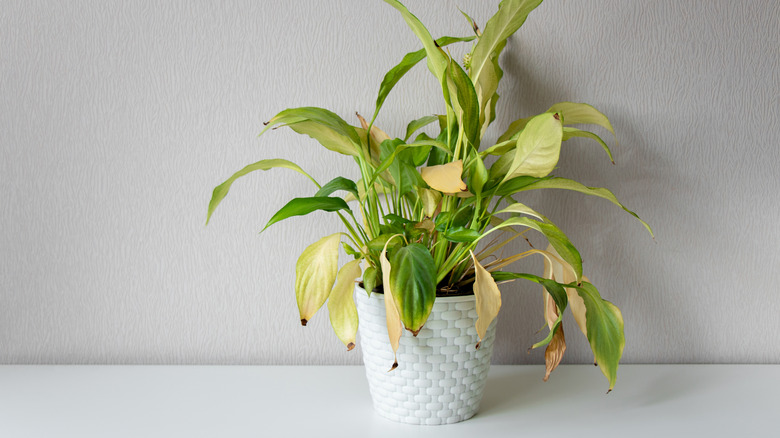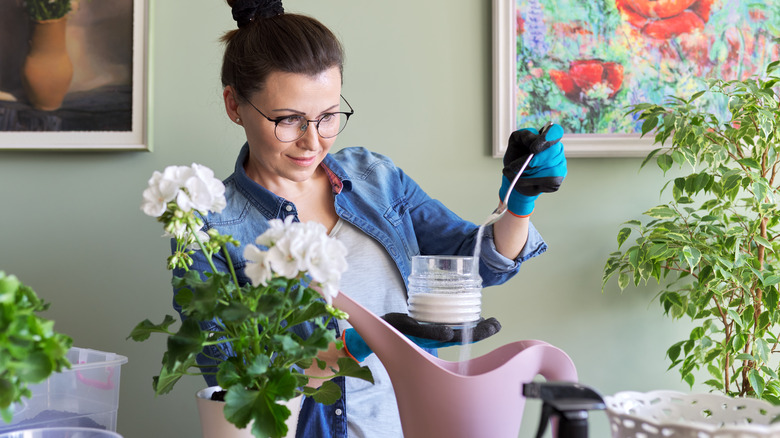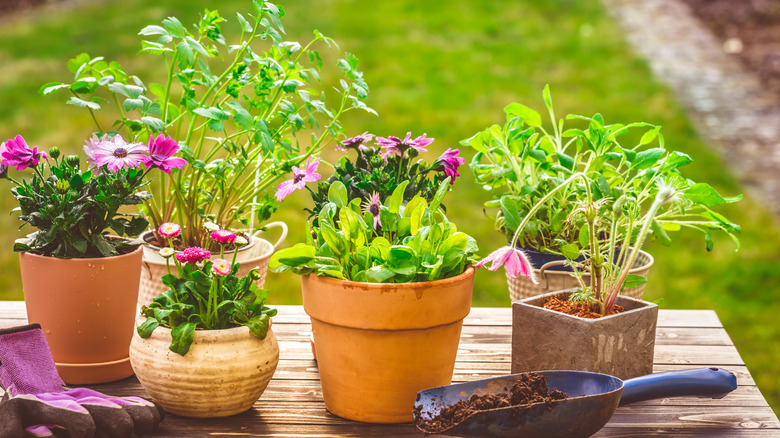How To Reduce Transplant Shock When Repotting Houseplants
Transplant shock is the catch-all phrase that describes any form of stress experienced by plants when they are transplanted into the ground or repotted. Stressors include fluctuations in environmental conditions such as humidity, temperature, direct sun exposure, shade, and wind. Handling roots can also cause shock, as does insufficient water intake after roots are broken indoors or are too shallow to reach water sources outdoors. It can happen with any plant from the smallest houseplant to the largest outdoor tree. The Purdue University Department of Botany and Plant Pathology states that plants under stress may have difficulty adapting to their new home, which could cause them to deteriorate in overall health while also making it harder for them to fight off normal issues like pests and weather.
According to Nature and Garden, symptoms vary, starting with leaf wilt or prematurely falling flowers, and ranging to the death of an entire branch. In extreme cases, untreated symptoms from transplant shock can actually kill a plant, but don't worry just yet. There are plenty of useful tips to help you prevent transplant shock in the first place, and to know exactly what to do if and when it happens. Taking care of houseplants can be a very rewarding enterprise. With the best knowledge in tow, you can set yourself up for many years of thriving flora both indoors and out.
Time your transplant accordingly
Timing is vitally important, whether you're out in the garden or indoors with houseplants. Penn State Extension says the start of the active growing season is the best time to move your plants into bigger pots, so the roots will have room to spread out rather than twisting around themselves and rendering the plant root-bound. In many cases, this will mean early spring. It's most important to avoid the heat and harsh sun of summer, both of which will make it harder for your plant to thrive.
Minimize root disturbance
Nature and Garden explain that the roots are the part of the plant that will inevitably suffer the most from any kind of handling. When removing your houseplant from its original container be very careful, especially when roots have begun to sneak out through the drainage holes. To the best of your ability, coax them out gently in order to avoid breakage. Trim only when necessary. Otherwise, leave them as undisturbed as you can.
Know your soil
It's important to understand the best growing medium for each of our plants. Another thing to consider is that right or wrong, your plant has adapted to whatever type of soil it's currently in. Smart Garden Guide points out that a change in soil consistency or pH level in your new potting medium could be enough to fluster root systems and send them into shock. The urge to do what's best for the plant by choosing the ideal soil may actually be detrimental. If your plant is healthy, try to repot it in something similar.
Irrigate effectively
It will help if your plant is thoroughly hydrated before you start any handling. The Illinois Extension at University of Illinois Urbana-Champaign says you can do this by watering it one hour before transplanting. Experts there also recommend laying a coffee filter across the bottom of your new pot before filling it with soil. This hack doesn't interfere with drainage but it does keep all of your potting mix inside the container.
Work quickly
Epic Gardening recommends working quickly to cut down on root exposure. Gather everything you need in advance and get your new pot ready before you do anything that will disturb the plant. This includes not only filling the new pot with an appropriate soil mix but also making sure the temperature of the new soil is the same as the old. For this to work you can bring your bag of potting soil into the area where your houseplant lives and let it sit overnight.
Acclimate your plants gradually
Plants can feel the difference between being indoors with air conditioning and being outdoors under the blazing sun. Gradual acclimation to a new environment is important. For an indoor plant moving outside for the summer, Bloomscape suggests leaving it in a shaded spot for an hour or so each day. Over time it will adjust to the new conditions and you can start to build up its time in direct sun. The same goes for any plant that's moving into a zone with a drastically different temperature or humidity as well.
Recognize symptoms
If you've had no choice but to move or repot a plant in a way that was less than ideal, then be sure to keep an eye on your newly transplanted plants. Knowing what to look for and treating symptoms as soon as they appear will help keep them healthy. Most evidence will be obvious in a plant's leaves. Indoor Plants for Beginners lists wilted or curled leaves as the most common symptom, with distinct changes in color most often towards yellow or brown coming in at a close second.
Try the sugar water cure
It's perfectly natural for you to do everything right and still have a plant that is suffering from transplant shock. A great idea from Garden Tips For All is to mix a tablespoon of sugar into a quart of water. Then, avoiding the leaves, pour the mixture onto the soil and around the base of your plant. This hack will provide an energy boost from the sugar that the plant can use in its recovery. Give it a little time and chances are good that your favorite little houseplant will bounce back to health.
Start with healthy plants
Perhaps the best way to deal with transplant shock is to avoid it altogether. The folks at Happy Sprout believe that starting off with the healthiest plants is the best way to do just that. So much of the repotting process is concerned with root health that it's important to look closely at the plants you're buying at the store. Strong roots, fully hydrated soil, and bright green foliage are all signs that a plant is in good health and will likely fare better than others when it's time to repot.
